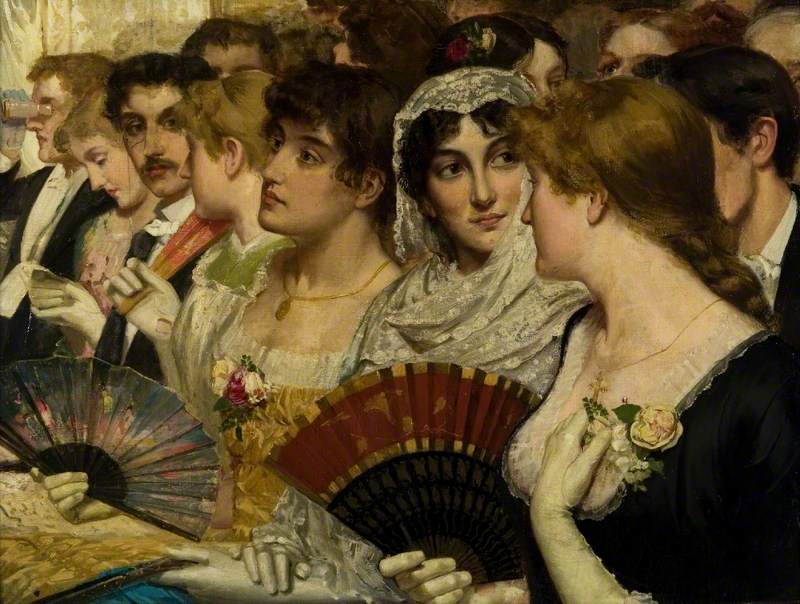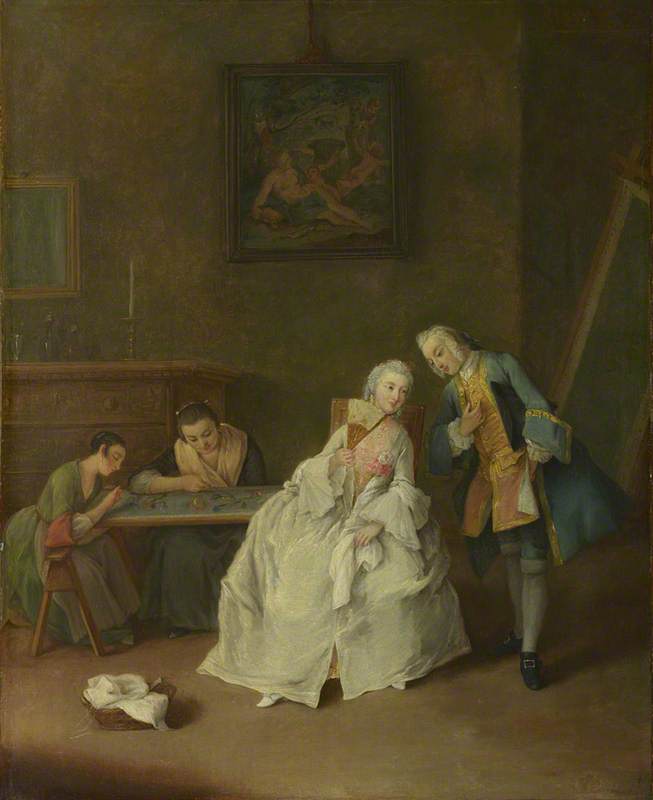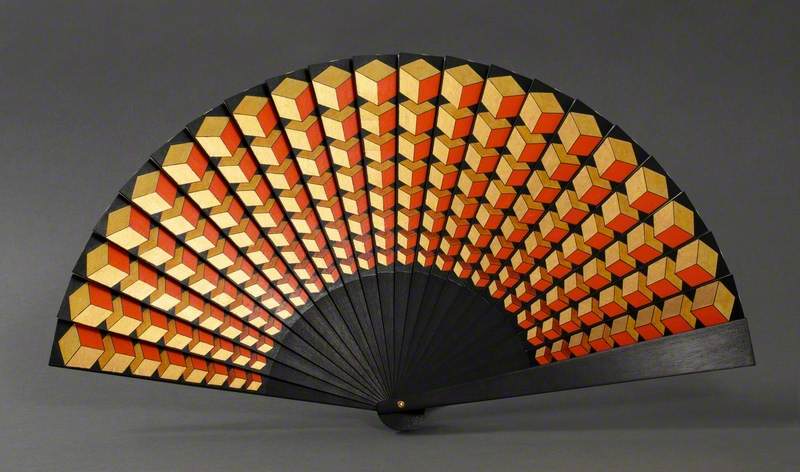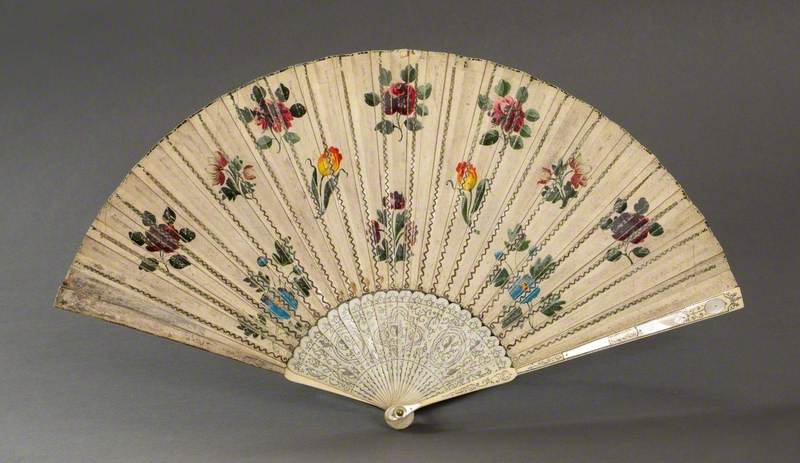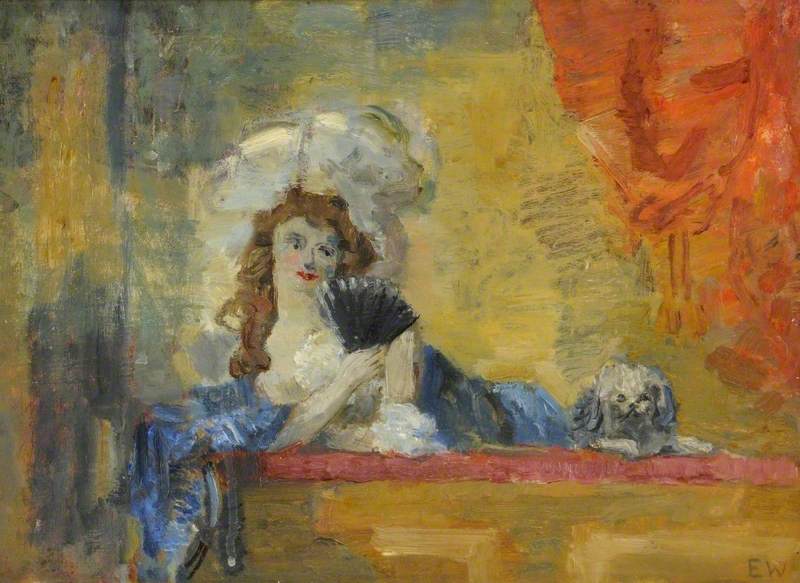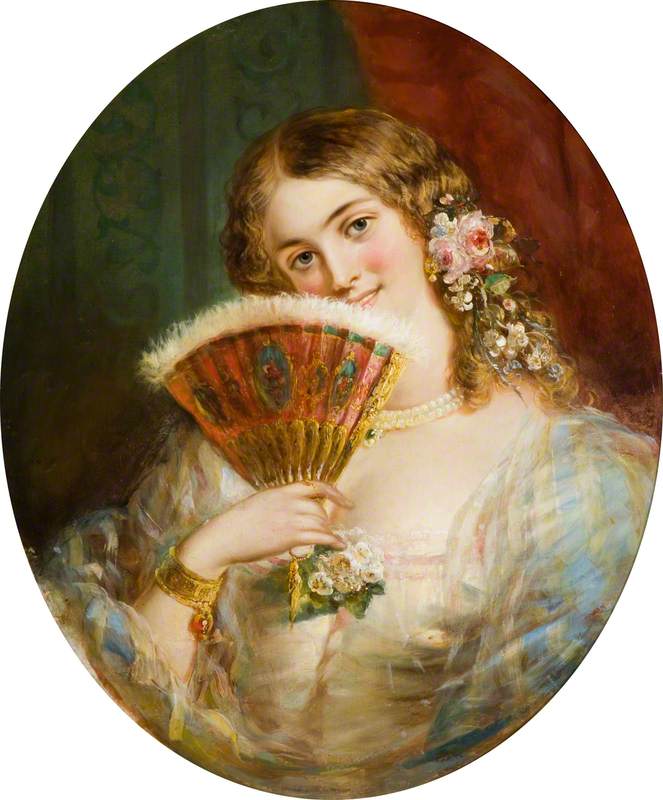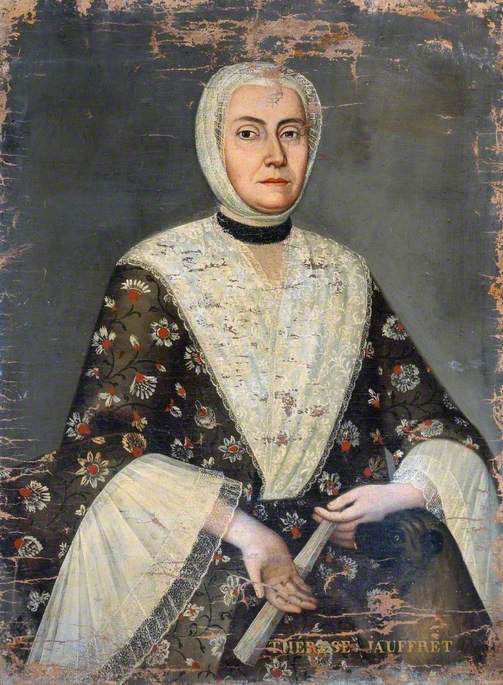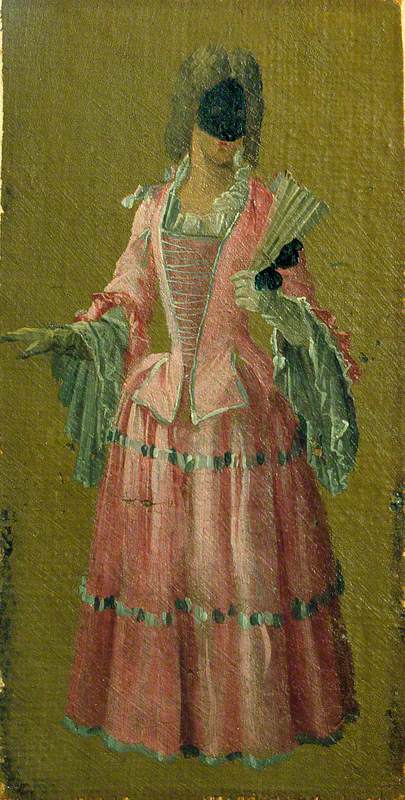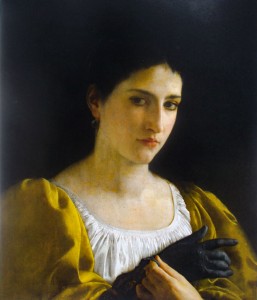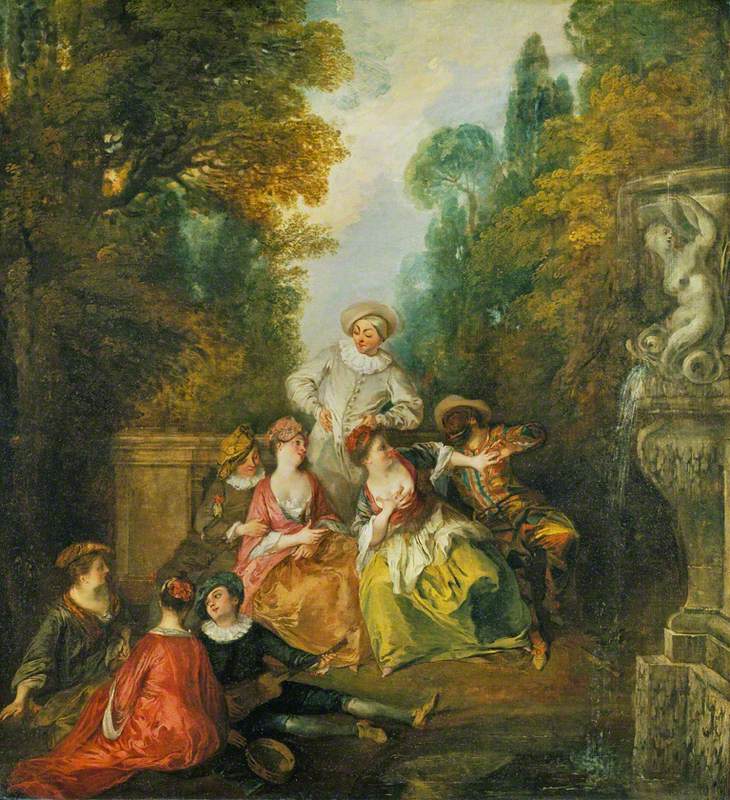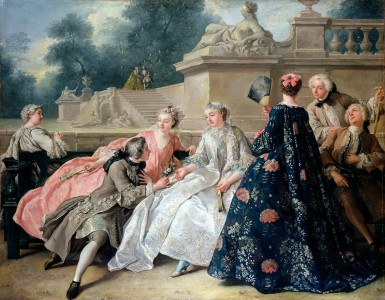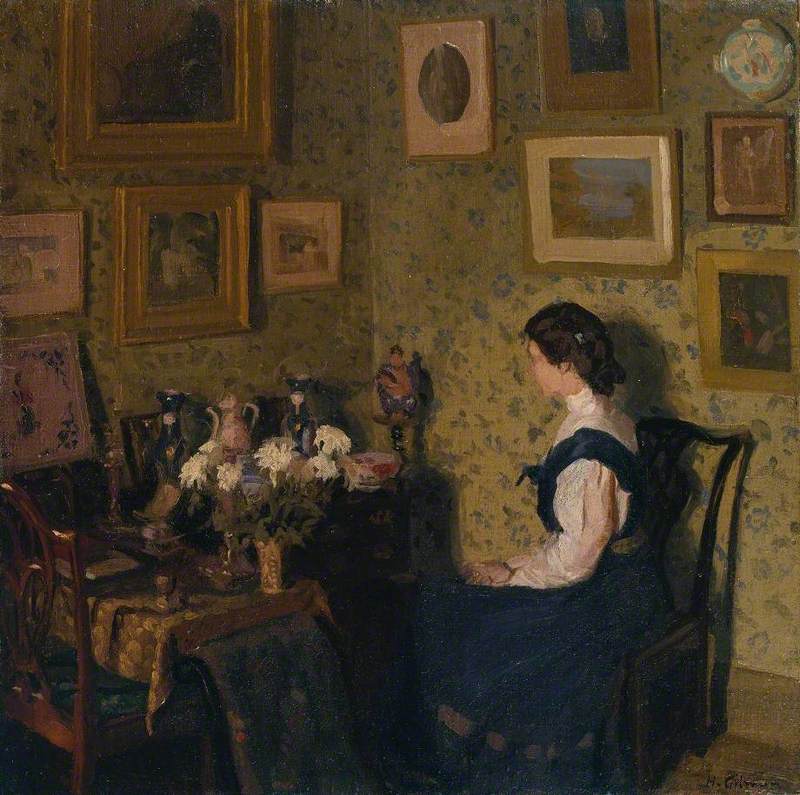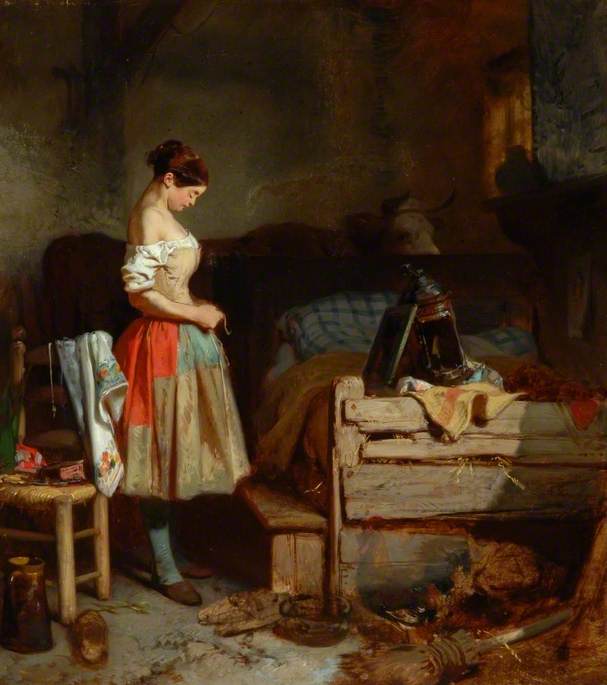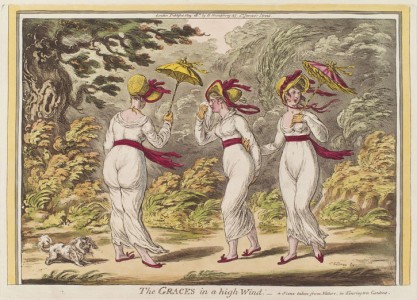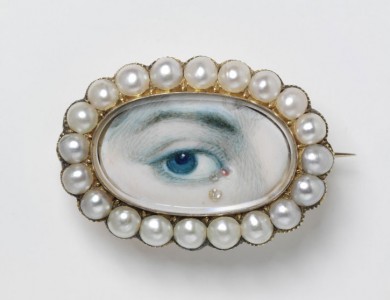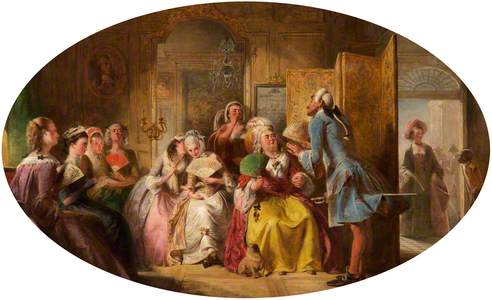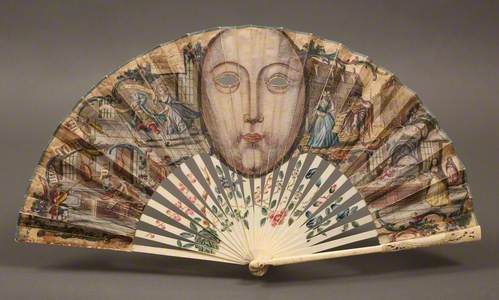The handheld folding fan, an ingenious Japanese invention, was conceived with practicality in mind. Its function soon began to broaden, however. Following its introduction to Europe in the sixteenth century, the folding fan was, by the beginning of the eighteenth century, considered by society's upper ranks to be an essential component of female attire.
Woman Holding Up a Parasol (from the series 'Ten Classes of Women’s Physiognomy')
c.1792–1793, woodblock print on paper by Kitagawa Utamaro (c.1754–1806) 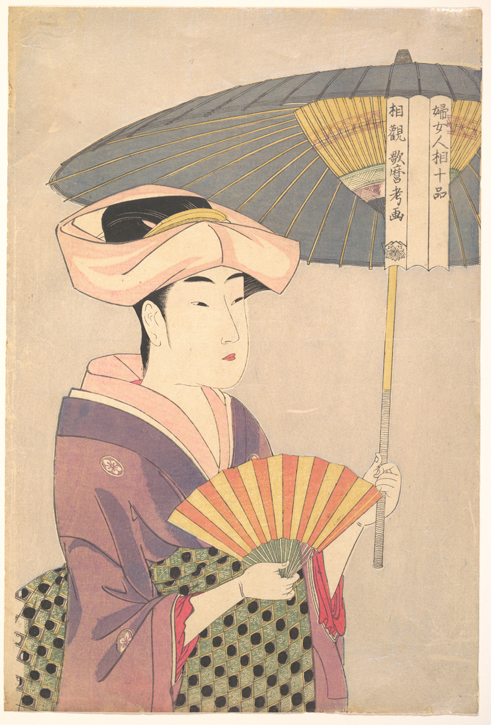
Via elaborate, costly modes of craftsmanship and ornamentation, the folding fan reflected, in material terms, the status, taste and style of its carrier – think of it as the Hermès handbag or Louboutin stiletto of its day! Important though the fan's decorative aspects were, it was through handling that the article acquired extra potency. Artfully manipulated it emphasised the spoken word or, if the situation demanded so, might even act in place of it.
Miss Edith Evans in a Restoration Comedy
c.1934–1935
Ethel Léontine Gabain (1883–1950) 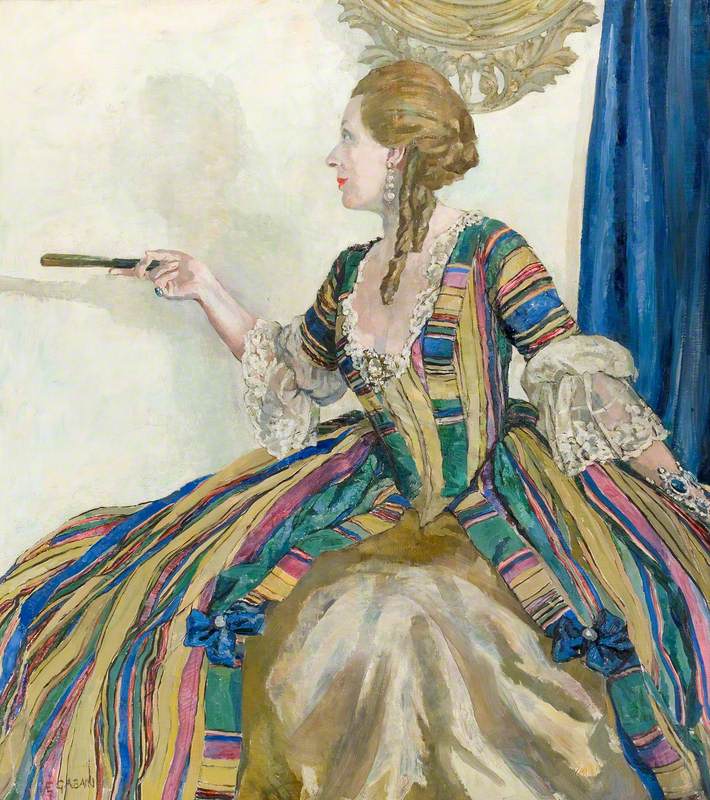
Via Restoration-period theatre we start to form an impression of the fan's creative potential. Female actors, permitted to play for the first-time roles previously acted by adolescent males, co-opted the fan as a stage prop to perform and exaggerate 'femininity'. Through learnt repertoires of handling, female Restoration actors used fans to reinforce or, through purposeful misuse, subvert the gender-based stereotypes commonly associated with the roles they might be called upon to play.
In the eighteenth century (the fan's so-called 'Golden Age') fans were similarly performed, but in everyday situations governed by codes of conduct designed to emphasise social hierarchy and civility – pleasure gardens and Court gatherings, for example. From the memoirs of Baroness Oberkirch we learn that even Marie Antoinette was known to modulate her fan with intent. Recalling one meeting with the Queen, the Baroness writes, 'Her Majesty received me with a smile and a threatening motion of her fan.'
Eighteenth-century courtesy books cover broad-ranging topics relating to etiquette and instruct their readership on class-appropriate attitudes and behaviour. Here women are encouraged to handle their fans in ways commensurate with prevailing gender and class-associated stereotypes.
Françoise Nivelon's 1737 The Rudiments of Genteel Behaviour illustrates several fan-carrying figures such as the 'Courtsie' [sic] in which a closed folding fan is held precariously at the pivot end between the forefinger and thumb of the left hand with the right hand supporting the opposite end.
'The courtsie' from 'The Rudiments of Genteel Behavior' by F. Nivelson
1737, print by Louis Philippe Boitard after Bartholomew Dandridge 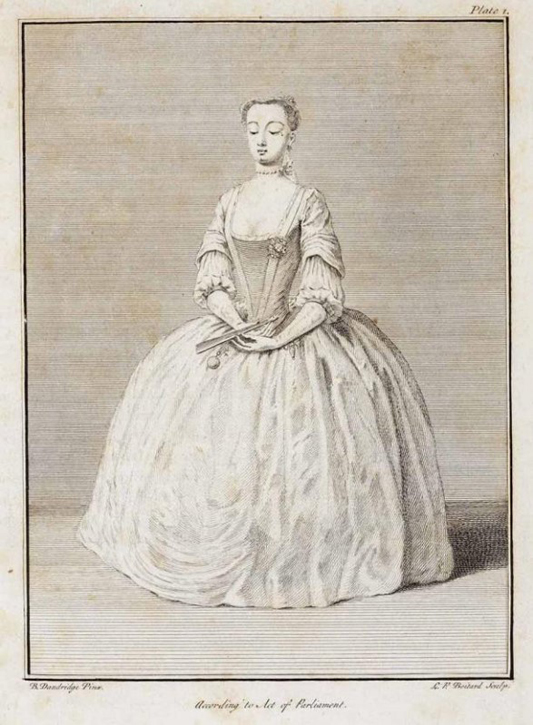
Completing a deferential bob whilst maintaining the desired position of the fan would surely have necessitated a superhuman degree of agility and balance! Whether or not women earnestly subscribed to the types of social dictates outlined in Nivelon's and other such manuals remains debatable.
Towler's 1770 The Young Gentleman and Lady's Private Tutor goes further, devoting an entire section to the fan. The author describes the article as both 'genteel and useful' and is of the opinion that 'ladies should know how to make proper use of it.' To this end he offers six 'positions of the fan' each described and illustrated with corresponding figures posed in a variety of situations and settings.
The first position, imitating Nivelon's curtsy, sets the tone for a succession of impractical poses, to which the author adds the following disclaimer: 'These figures are not so genteel as they ought to be, nevertheless young ladies may discern the proper position and learn to hold their fans neat and polite.'
Towler is one among many eighteenth-century figures – all male, I might add – keen to instruct women on 'appropriate' forms of fan handling. Social commentator and essayist Joseph Addison, for example, wrote about fans in a style that today might be considered at best irreverent, at worst deeply misogynistic.
The Academy of the Fan, first published in The Spectator magazine in 1711, is arguably the most renowned of Addison's fan-themed satires. The opening gambit, 'Women are armed with fans as men with swords, and sometimes do more execution with them' betrays a deeper, societal fear of the socially transgressive woman and the perceived 'threat' she represented to patriarchal authority in the eighteenth century.
Fanology (Speaking Fan)
1979, unmounted fan-leaf, formerly mounted, with lettered inscriptions on front and back giving instruction for communicating with a fan, after Charles Francis Badini & published by William Cock 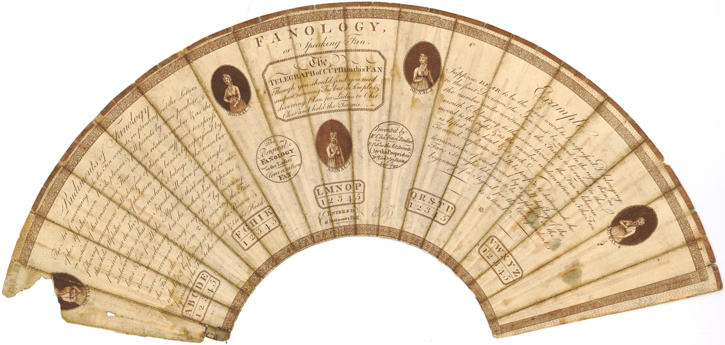
Addison's mocking satire is sometimes referenced by fan enthusiasts in association with the somewhat spurious 'Language of Fans'. Formal codes of non-verbal communication based on how fans were opened, closed, held, or pointed certainly did exist in the eighteenth century (The Fan Museum and British Museum hold within their collections a number of so-called 'speaking fans') but as to what extent these secretive codes were practised is open to debate.
The language of the fan is revived in the latter part of the nineteenth century when celebrated fan-maker Duvelleroy distributes a pamphlet containing instructions for fan-talk. A fan twirled in the right hand, for example, translates as 'I love another.' Similar clothing-related codes of communication emerged at the same time (the language of the parasol and glove, for example) but it should be noted that none were followed with any seriousness.
More recently, there has occurred a noticeable revival in the fan's popularity and, consequently, I find my attention once more turning toward the subtle (or not so subtle!) art of handling a fan. Drag artistes, for example – many of whom were made famous by competing on the pop culture phenomenon RuPaul's Drag Race – often wield folding fans and, in a similar fashion to the seventeenth-century Restoration actor, punctuate their gender-bending discourse with theatrical, sometimes audible, fan gestures.
Pop music icon Madonna, too, routinely incorporates folding fans within her dance choreography, perhaps most famously in a seminal performance of her chart-topping Ballroom-inspired track Vogue, reinvented as a gloriously decadent, 'Let them Eat Cake' rococo confection for the 1990 MTV awards.
I'm left wondering whether the Queen of Pop in fact read Baroness Oberkirch's revelatory memoir...
Jacob Moss, Lecturer at The Arts Society
